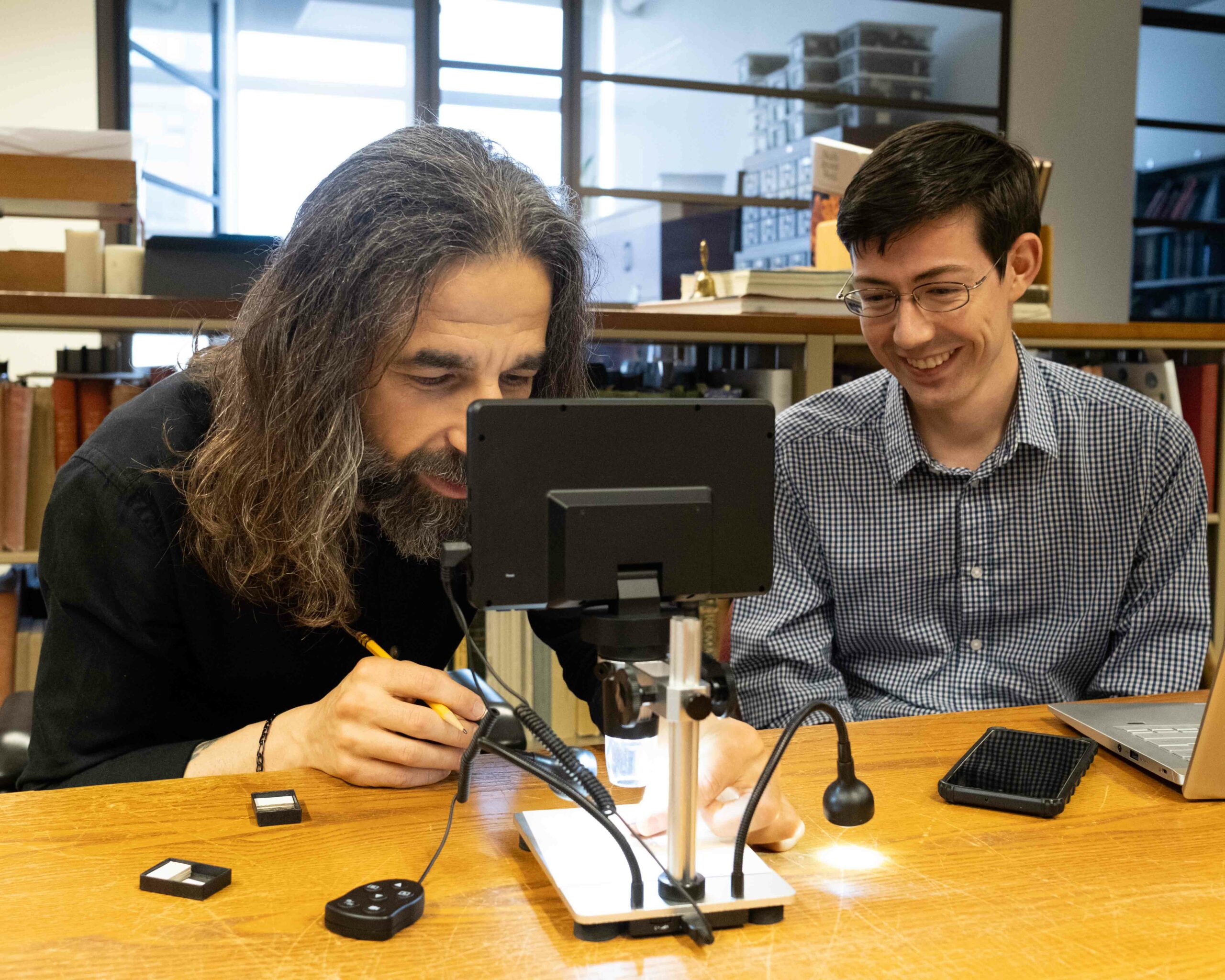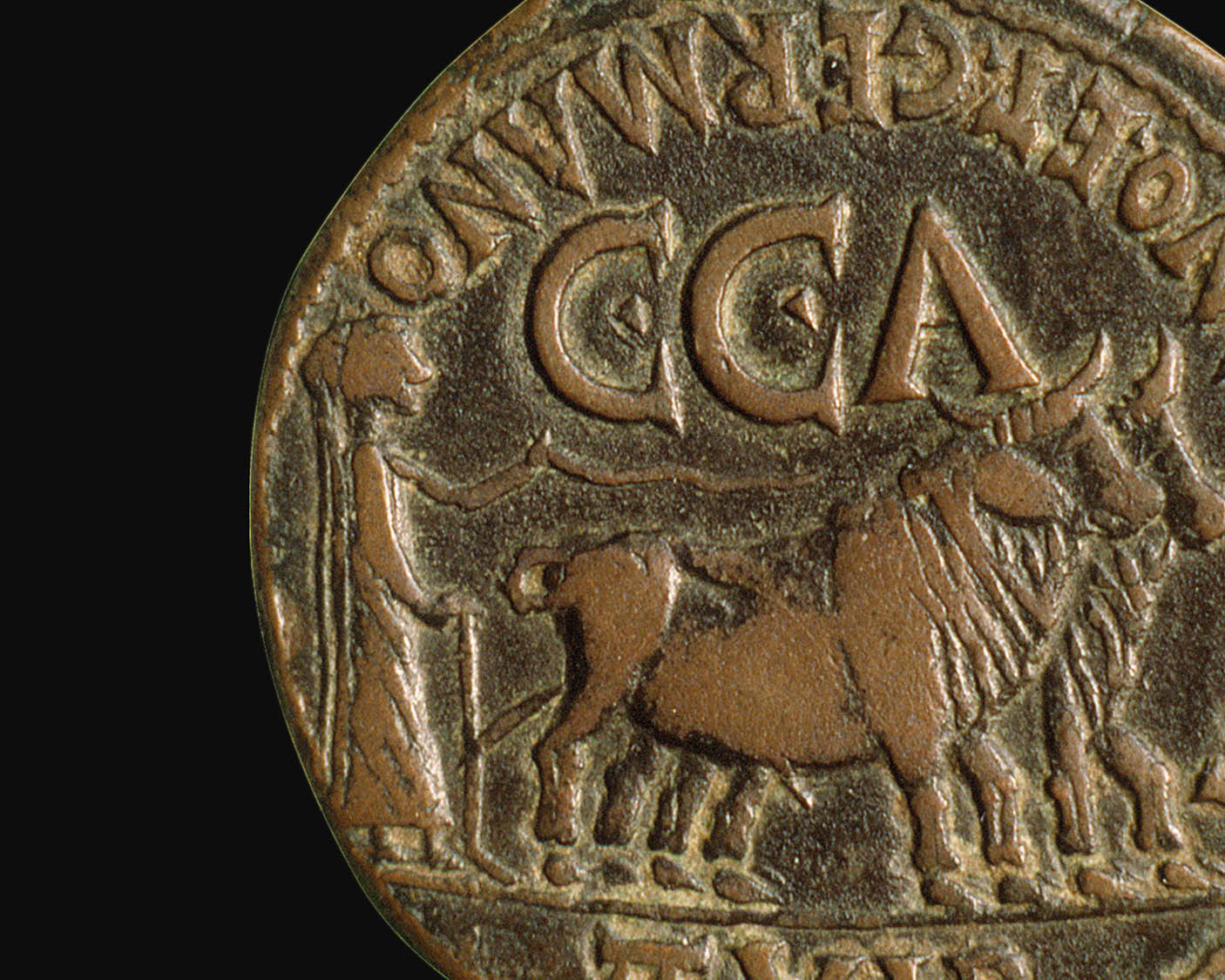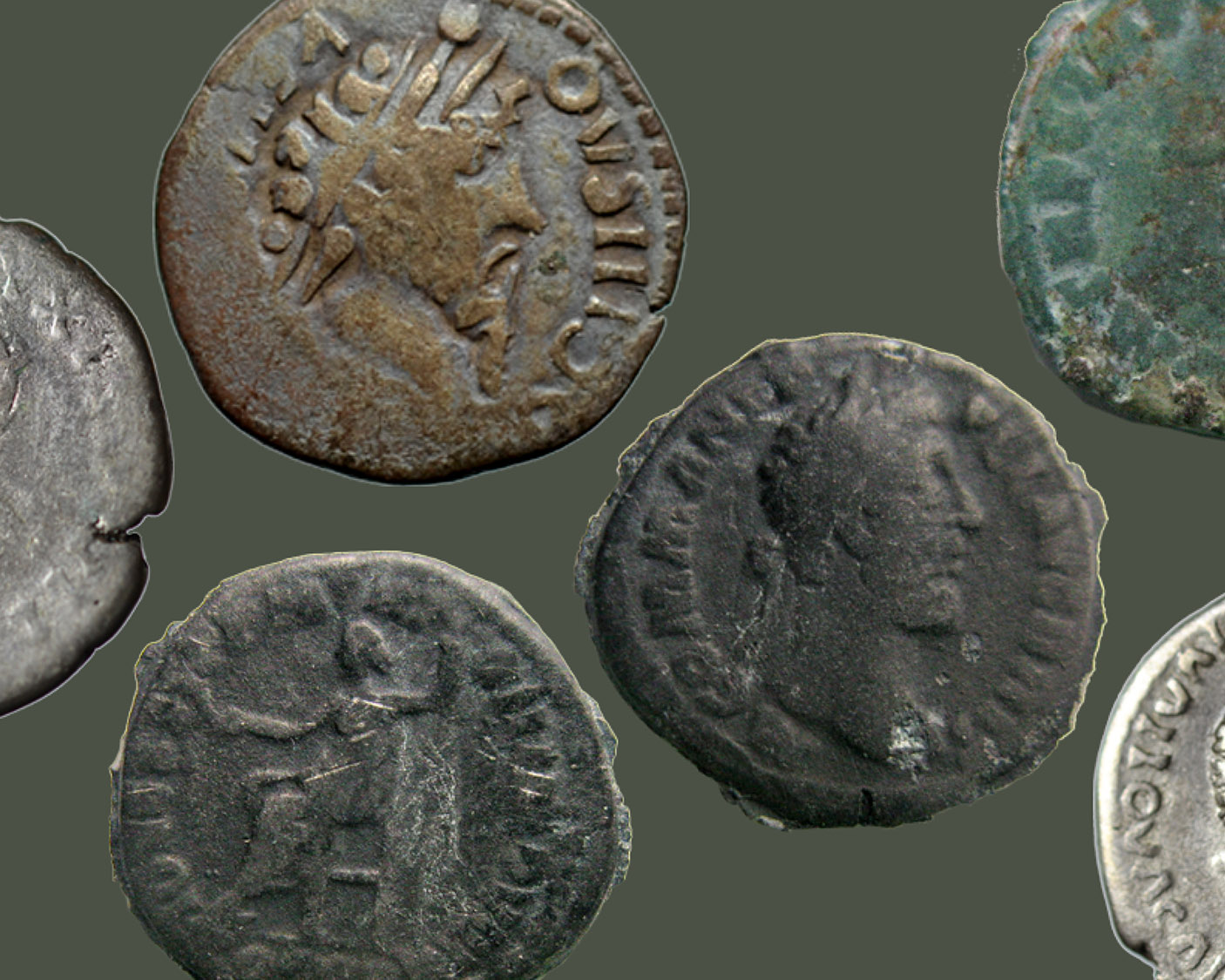The Medieval West
Throughout early Medieval Europe, coins were not as important as they had been during the Roman period. The Germanic people, who had conquered the western part of the Roman Empire, valued coins primarily by their bullion value. Coin production was low, and barter was a common form of exchange.
In about 755, the Frankish King Pepin the Short (751-768) introduced a hammered silver coin called a denier, or penny in English, the prime European coin. Such silver coins were used to pay for troops or to buy luxury goods.
In about the late 12th century, Europe had again established a trading network and system of coinage. The discovery of new mines in central Europe and the installation of banking houses further accelerated monetary development. Wealthy cities in northern Italy introduced large silver and gold coins, which facilitated exchange with many of their trading partners.
The Dark Ages and The Penny
Merovingian Frankish kings failed to maintain the fiscal institutions and gold coinage of Rome. Gold coinage was steadily debased and minting was decentralized by 625. At the same time, northern Europeans began to strikesceattas. In about 755, Pepin the Short introduced a silver coin, the denier in French or penny in English—the most common European denomination until the 13th or 14th century.


Frankish gold tremissis of the Merovingian king Charibert II (629-632).
1949.49.4


Anglo-Saxon silver sceat (7th-8th century). These coins are nicknamed “porcupines” after the abstract portrait’s spiky hair.
1974.26.20


Frankish silver denier of Carolingian king Charlemagne (765-814) with a monogram of the king’s name and a cross.
1986.155.1

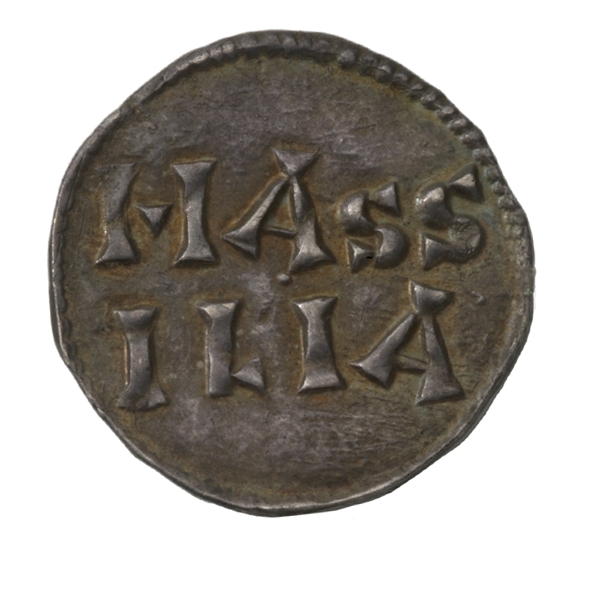
Frankish silver denier of Carolingian king Louis the Pious (813-840) struck in Massilia (the Latin for Marseille).
1967.182.59


Carolingian gold solidus of Louis the Pious (813-840) with a stylized royal portrait.
1954.16.1
The Normans
In 911 the Normans (“north men”) settled as vassals in the French duchy of Normandy. William the conqueror won the English throne in 1066 and inherited the Anglo-Saxon penny, the most stable silver coin of Western Europe. Other Norman adventurers led by Robert Guiscard (1038-1085) overran Byzantine Italy and, in 1601, invaded Islamic Sicily. Norman kings of southern Italy and Sicily (1130-1198) minted coins based on Byzantine and Arabic prototypes.
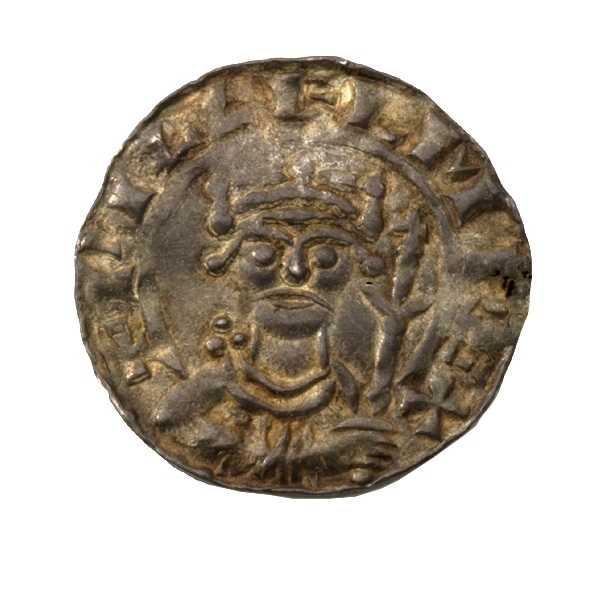

English silver penny of William the Conqueror (1066-1087).
1974.34.20


English silver penny of Edward the Confessor (1042-1066).
1967.182.28


Sicilian bronze trifollaro of Roger I, count of Sicily (1072-1101), depicting a mounted knight.
1911.105.265


Sicilian gold tari of Roger II, king of Sicily (1072-1101), depicting a cross and Greek and Arabic inscriptions, illustrating the mixed culture of Norman Sicily.
1962.116.2


Gold augustale of Frederick II, Holy Roman Emperor (1198-1250), with portrait and imperial eagle inspired by Roman coinage.
1960.111.44
Bracteates
In eastern Germany during the 11th century thin silver coins known as bracteates (“leaves”) were struck. Given their thinness, such fragile coins could not be struck from a set of dies for obverse (“heads”) and reverse (“tails”) images. Instead, the thin silver or gold was hammered over a raised relief so that the image was impressed into the metal.
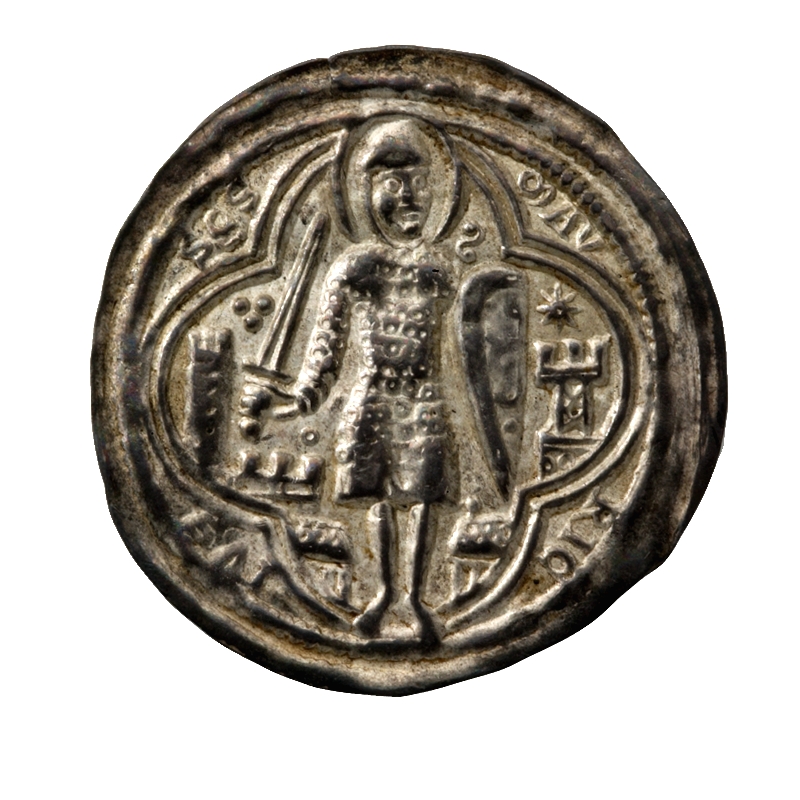
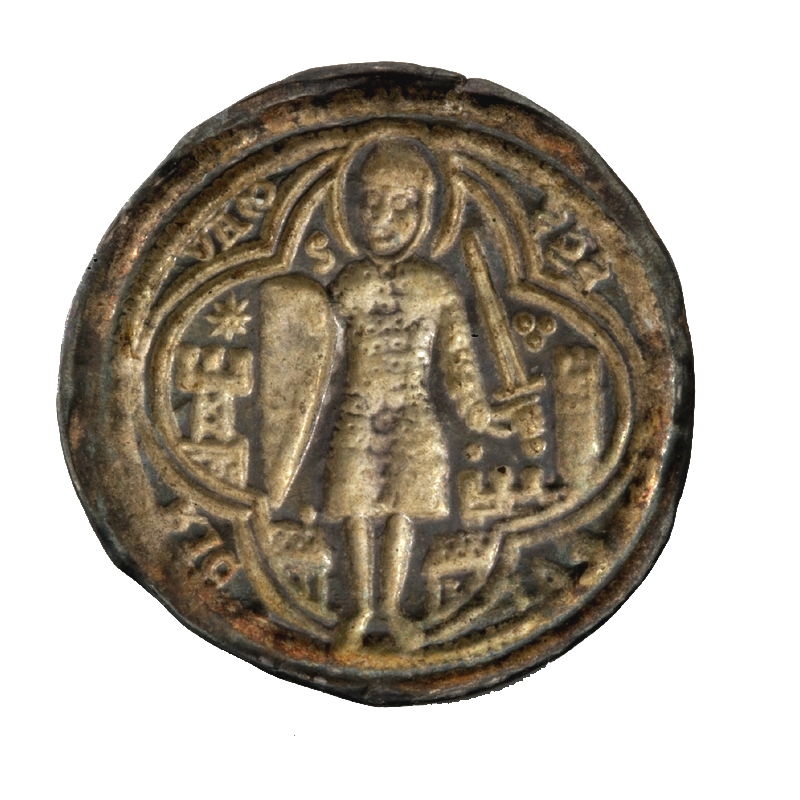
Silver moritzpfennig (c. 1180) struck by the city of Magdeburg. The coin, showing the armored St. Maurice, was nicknamed the “Penny of Maurice.”
1930.98.7


Silver bracteate (c. 1189) struck by the city of Mühlhausen, depicting the Holy Roman Emperor Frederick Barbarossa (1122-1190) as Crusader.
1930.98.9


Silver bracteate struck by the city of Meissen with a portrait of Dietrich the Hard-Pressed (1197-1221), Margrave of Meissen.
1915.89.6


Silver bracteate struck by the city of Hildesheim with a portrait of Bishop Hartbert (1189-1216).
1959.136.1
The Crusades (1095-1292) and the Bezant
In 1095, the First Crusade was preached, resulting in the Christian capture of Jerusalem in 1099. The bezant, a coin modeled after Muslim gold dinars, circulated in the Crusader states. Because of its Muslim legends, the coin was replaced by the bezant staurat, depicting a Christian cross, but an Arabic inscription. By 1270, it was replaced by a bezant with a Latin inscription and the Lamb of God.


Lead bulla (seal) of King Baldwin IV (1172-1183) of Jerusalem depicting the Church of the Holy Sepulcher (left), Tower of David (center) and Dome of the Rock (right).
1956.152.1


Italian silver denaro (1039-1125) struck at Lucca. These coins were popular among the early Crusaders.
1981.13.11


Crusader gold bezant sarrasin (early 12th century) imitating a Fatimid dinar of Egypt.
1977.226.42


Crusader gold bezant staurat (c. 1150).
1957.61.1
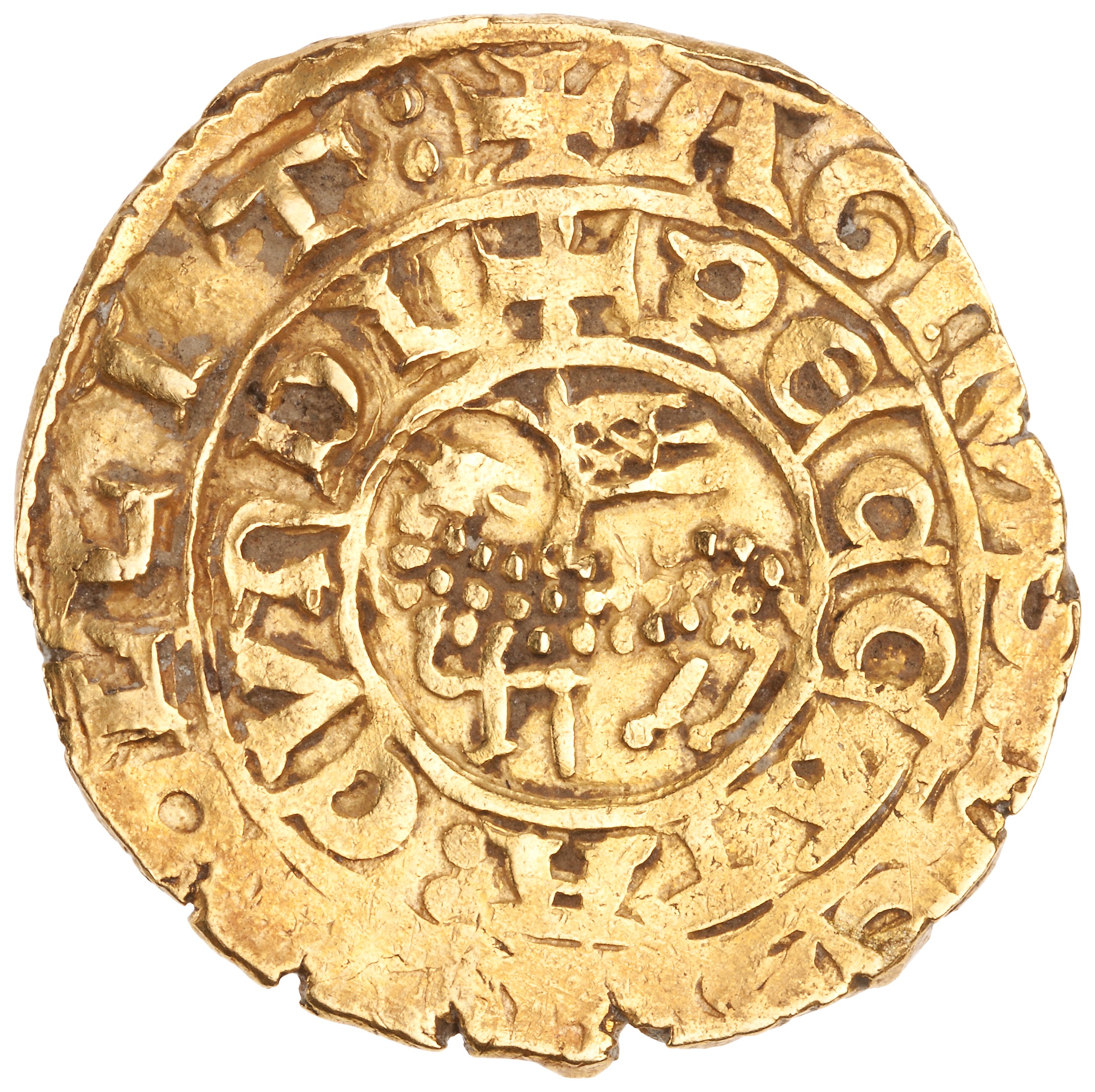

Bezant (c. 1270) with a Latin inscription and the Lamb of God.
1952.115.4
The Third Crusade (1189-1192)
King Richard the Lionheart and Sultan Saladin (Yusuf bin Ayyub Salah al-Din) agreed on Muslim possession of Jerusalem.
On return from the Third Crusade, Richard was captured in Austria and held for ransom. His brother, Prince John, paid the ransom with English pennies, which flooded Germany, influencing coinage. John’s heavy taxation inspired the Robin Hood legends.
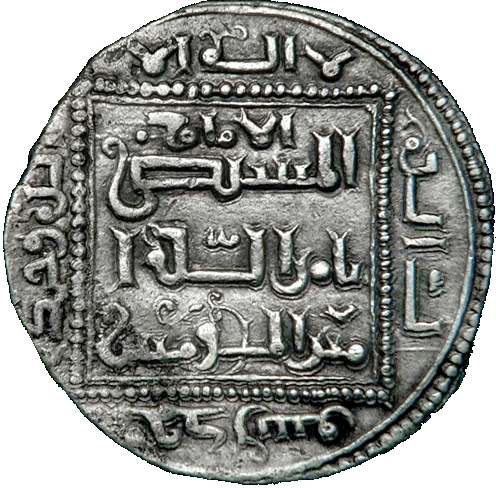
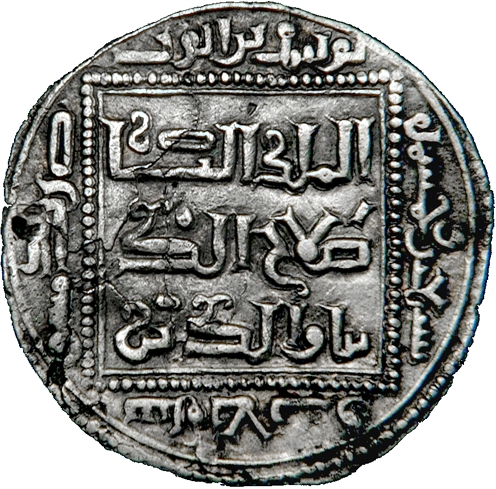
Ayyubid silver dirham (1178) of Salah al-Din (1174-1193).
1936.105.1
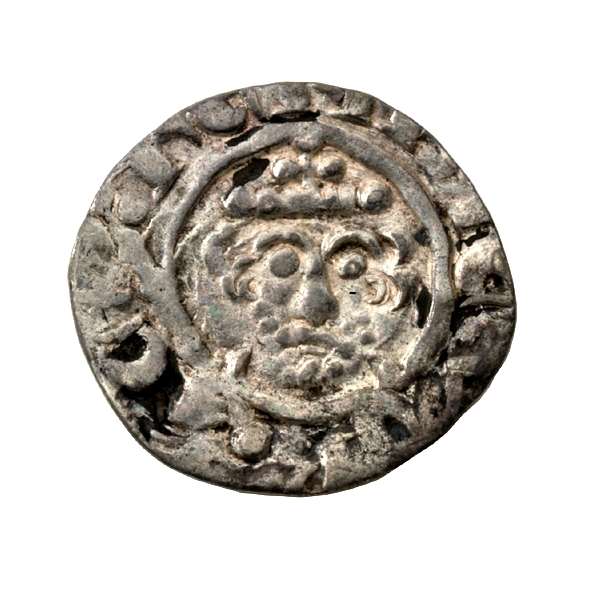

English silver penny of Richard the Lionheart (1189-1199).
1901.21.7


English silver penny of King John (1199-1216).
1967.182.36
The End of the Crusades
Despite the great Crusades led by Frederick II and St. Louis of France, the Christians were driven from the Levantine ports in 1292. The Knights of St. John established a new base at Rhodes (1309-1522), and the Kings of Jerusalem carried on the struggle from Cyprus as late as 1365.
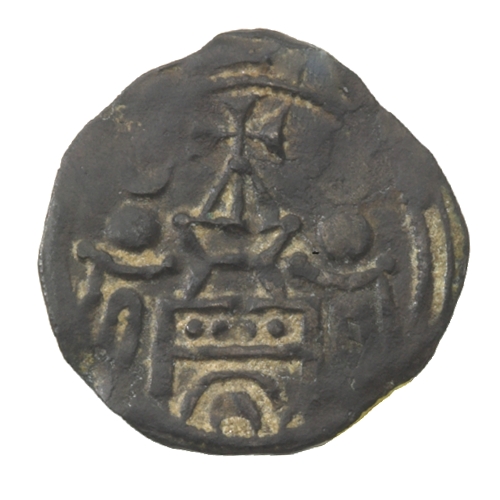
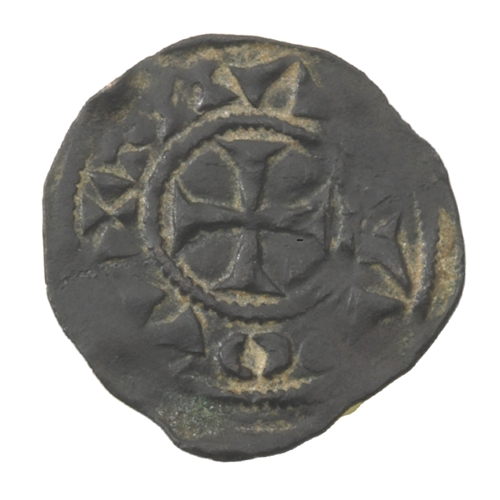
Jerusalem silver denier of the Knights of St. John.
1967.278.7


Rhodian silver gigliato of the Knights of St. John under Elion de Villanova (1319-1346).
1881.11.3


French silver gros tournois of King Louis IX (1226-1270).
0000.999.3150
The Italian Communes and the Papal States
In 1204 the Fourth Crusade captured Constantinople. Crusaders and Venetians partitioned the Byzantine Empire, and Venice emerged as a naval power with a commercial Mediterranean empire. The new Venetian silver grosso was provided with a gold multiple, the ducat, successor to the Byzantine hyperpyron. In 1252, Florence commenced striking the gold florin, which proved a popular trade coin. In the 14th century, the great monarchs of Western Europe created their own gold coinage based on the florin, identifiable by the prominent fleur de lis.
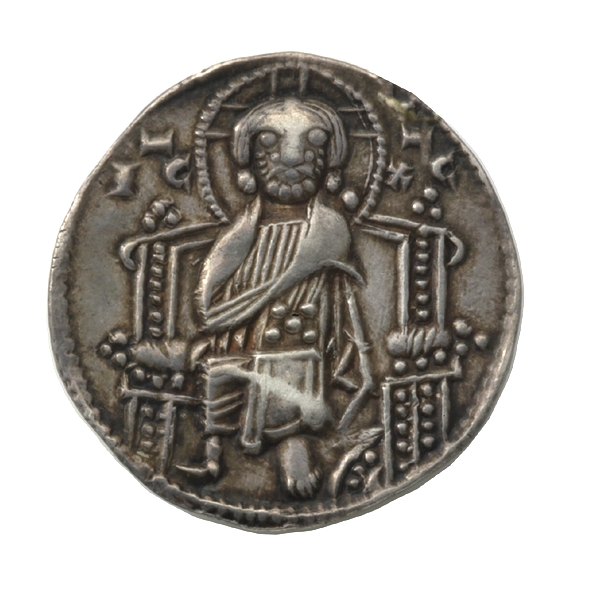

Venetian silver grosso issued under Doge Pietro Ziani (1205-1229) depicting St. Mark presenting the city banner to the Doge.
1971.42.3


Byzantine electrum aspron trachy of John II Comnenus (1118-1143) showing St. George presenting a cross to the Emperor.
1944.100.18065


Venetian gold zecchino issued under Doge Peter Gradenigo (1289-1311), depicting St. Mark presenting the city banner to the Doge and a standing figure of Christ.
1954.237.94


Florentine silver fiorino (12th-13th century) depicting St. John the Baptist.
1937.146.955


Florentine silver grosso guelfo (1363) with the fleur de lis.
1937.146.982


Florentine gold florin (1252-1303) depicting St. John the Baptist.
1966.163.73


Silver grosso of Clement VI (1342-1352) with papal portrait.
1954.203.104

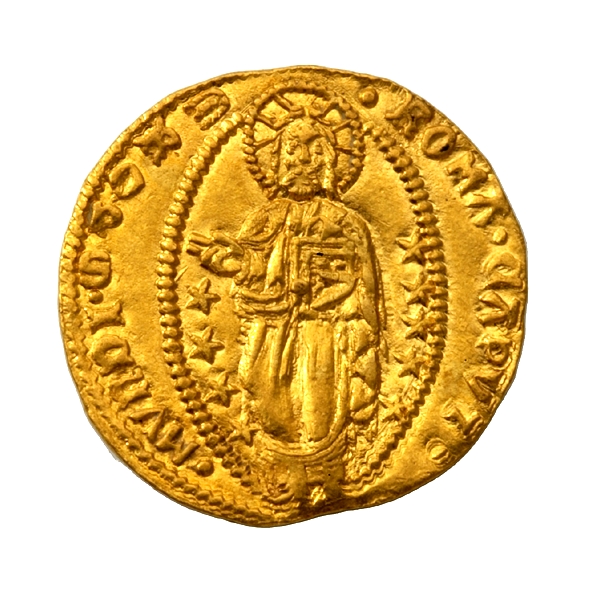
Roman gold zecchino struck by the Roman Senate (1350-1439) depicting St. Peter presenting the city banner to a senator, a scene inspired by the Venetian zecchino.
1955.54.180
The Hundred Years’ War
The Kings of England challenged the Kings of France in the Hundred Years’ War, and rising costs of warfare fueled coinage debasement and inflation. Kings were compelled to find new sources of revenue, and Italian bankers developed more sophisticated credit. The war, however, was best remembered for the origins of English and French national consciousness, largely due to the exploits and martyrdom of Joan of Arc.


French gold ecu d’or of King Charles VI (1380-1422) with royal coat-of-arms.
1980.109.578


Silver plaquette by Daniel Dupuis (1849-1899) depicting Joan of Arc guided by an angel and hailed as France’s national icon.
1912.56.1


English gold noble of King Henry V (1415-1422) showing the king on a ship.
1954.237.510
Exhibition Parts
I. Ancient Greece and the Mediterranean World
III. Medieval Byzantine and Islamic Empires
V. Ancient and Medieval East and South Asia
VI. New Sources: The 15th and 16th Centuries
VII. Europe in Transformation: The 17th Century
VIII. The Enlightenment: The 18th Century
XI. East and South Asia in the 19th Century
XII. Empires and Colonialism in the 19th Century
XIII. Moving West: 19th-Century America
XV. The United States in the 20th Century


